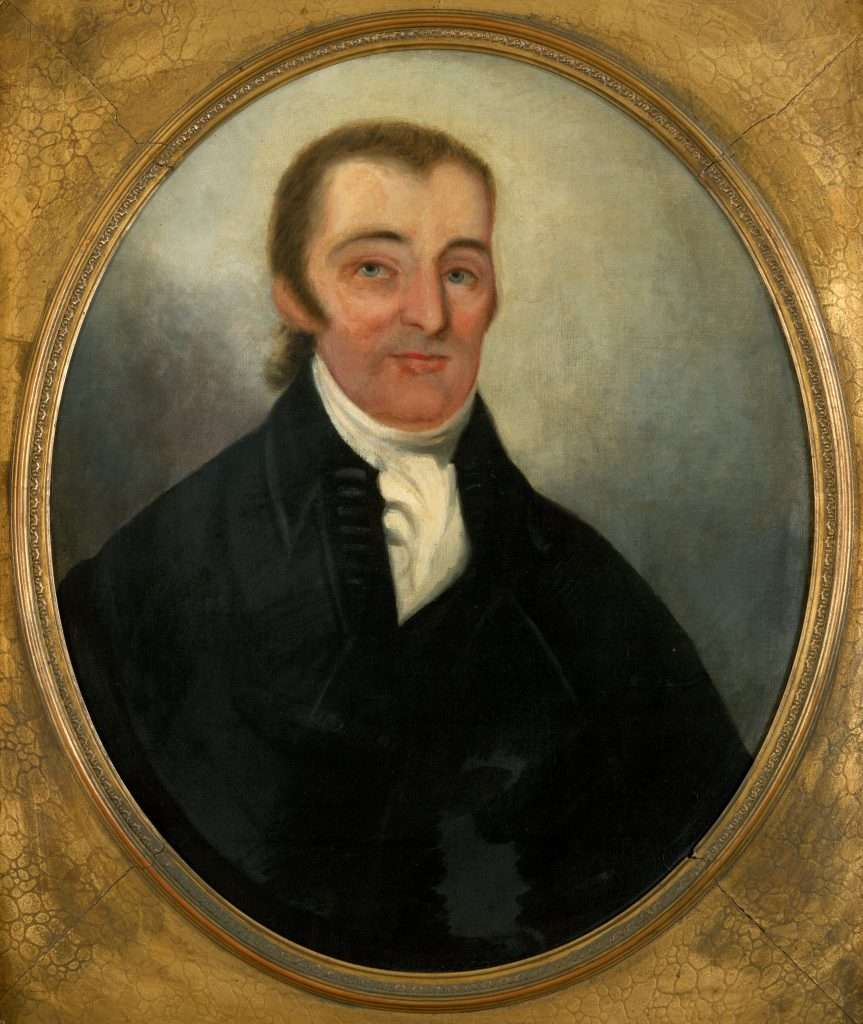
Gov. George William Smith is the only governor to die in office since 1776
Source: Encyclopedia Virginia, The Richmond Theater Fire

Gov. George William Smith is the only governor to die in office since 1776
Source: Encyclopedia Virginia, The Richmond Theater Fire
Since the state declared independence in 1776 and adopted its first constitution, seven times a member of the Council of State has been designated as governor after the incumbent resigned. In addition, a member of the Council of State took office once after an incumbent died. George William Smith moved from his position on the Council of State to become governor twice, and to date is the only governor to die in office after Virginia ceased to be a British colony.
"Acting" governors served only until the General Assembly met to elect a new governor. Acting governors were chosen to serve just temporarily until the legislature met, while elected governors were chosen to serve a full term starting the day of their election. As a result of governors leaving office early, the one-year term of office for governors elected by the General Assembly between 1776-1851 did not always start on the same day of the year.
Thomas Jefferson was elected governor three times and served his full time in office between June 2, 1779-June 3, 1781. At the end of his term in 1781, the legislature had been chased from Richmond and then Charlottesville by the British army under Lord Cornwallis. Jefferson did not follow the General Assembly from Charlottesville to Staunton; instead, he retreated to his Poplar Forest plantation near Lynchburg. The legislators selected Thomas Nelson to serve as governor on June 12, 1781. There was a short gap between the end of Jefferson's term and the election of Nelson. A member of the Council of State, William Fleming, served as acting governor.
During Reconstruction after the Civil War, two governors were forced from office by the commanding general of Military District No. 1 before their terms expired. At the time, Virginia was not a state within the Union.
The office of Lieutenant Governor was created in the 1851 constitution, creating an automatic replacement to complete an unexpired term. Until 1851, when the office of governor became vacant a member of the Council of State served as Acting Governor until the state legislature could meet and elect a new governor.
Members of the Council of State, which existed until 1851, consisted of key members of the General Assembly chosen by the legislature. The 1776 constitution required the Council of State to approved the governor's action, which by design limited the power of the Executive Branch. The revolutionary leaders breaking free from royal government in 1776 viewed the General Assembly as the equivalent of an elected Parliament and the governor as the equivalent of the king's representative, so the power of the governor were minimized.
Since 1851 no Lieutenant Governor has replaced a Virginia governor who left office prematurely, though several have been elected as governor for standard terms.1
Thomas Nelson was the first Virginia governor to resign after 1776. He left office in 1781 due to poor health. David Jameson served from November 22–30 until the legislature met and chose Benjamin Harrison as the new governor. Under Virginia's first constitution adopted in 1776, the legislature elected the governor to serve a one-year term. However, the General Assembly was not in session when Governor Nelson resigned. Jameson was serving on the Council of State, which chose him as acting governor.
Edmund Randolph resigned near the end of his term in 1788 in order to serve in the House of Delegates. That decision indicates the relative significance of being the top member in the executive branch vs. one of many delegates in the state legislature. Beverly Randolph was President of the Council of State and replaced him on November 12, 1788. Beverly Randolph was then elected by the General Assembly to serve three consecutive terms ending on December 1, 1791.
Governor John Tyler Sr. was appointed by President Madison to serve as a Federal judge in 1811. The last week of Tyler's term was filled by George William Smith, and then James Monroe was elected by the legislature to serve as governor. Smith was appointed governor a second time by the Council of State in April 1811. He replaced Monroe, who had been governor for only three months, when President Madison appointed Monroe to be the Secretary of State.
When the legislature met again in December, 1811, Smith was elected as governor by the General Assembly and dropped the "acting" from his title. Governor Smith had served only three weeks when the Richmond Theater caught fire. He escaped the burning building, but re-entered the theater to rescue others and died inside. The Council of State then selected Peyton Randolph to serve as acting governor from December 27, 1811-January 4, 1812, when the General Assembly elected James Barbour.
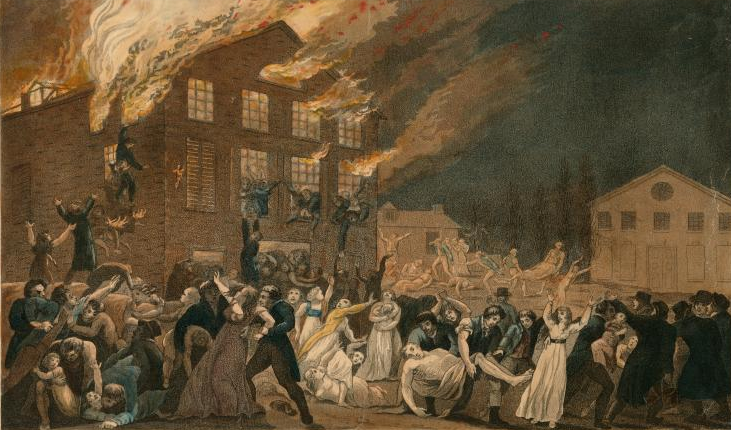
since Lord Botetourt died in 1770, the only other Virginia governor to die during his term was Gov. George William Smith in the Richmond Theater Fire on December 26, 1811
Source: Disastrous History, The Richmond Theater Fire
John Tyler Jr. was elected to a second one-year term by the General Assembly in December 1826, but one month later the legislature chose him to be a US Senator. The General Assembly then elected William Branch Giles. Governor Giles was re-elected by the legislature to two more one-year terms. Tyler went on to become the Vice-President of the United States, and became President after William Henry Harrison died in 1841.2
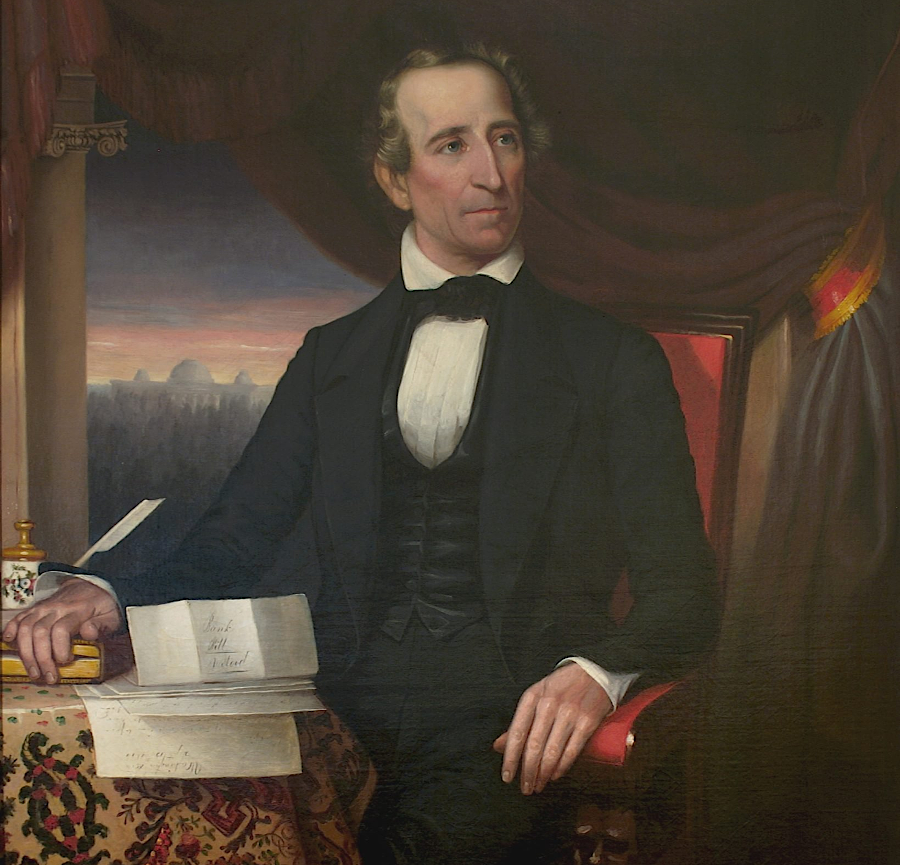
Governor John Tyler Jr. resigned in March 1827 after being elected to the US Senate
Source: Encyclopedia Virginia, John Tyler (1790–1862)
The state constitution was revised in 1830 so governors were elected by the General Assembly to serve a single three-year term, replacing the old one-year term (with a limit of three to be served consecutively). Governor Littleton Waller Tazewell served the first two years of his three-year term from 1834-36. He resigned in protest over the refusal of the State Senate to expunge its 1834 censure of President Jackson President Andrew Jackson for withdrawing Federal funds from the Bank of the United States. Tazewell lived 24 more years after resigning, but he did not serve again in public office.
The senior member of the Council of State, Wyndham Robertson, became acting governor after Tazewell resigned. He served a full year from March 30, 1836–March 31, 1837.3
Thomas Walker Gilmer was elected to a three-year term in 1840, but he resigned just one year into his term. He had proposed to exchange a resident of New York incarcerated in Virginia for fugitive slaves in New York, but the General Assembly refused to concur. Governor Gilmer quit, and won election that year instead to the US House of Representatives.
John M. Patton replaced Governor Gilmer. After 12 days, the General Assembly elected another member of the Council of State, John Rutherfoord, as governor. Rutherfoord resigned after one year. John Munford Gregory from the Council of State became acting governor. The General Assembly then passed a law declaring that replacements would serve a three-year term and chose James McDowell to replace Gregory.4
The 1851 constitution changed the term of the office to four years and allowed the voters, rather than the General Assembly, to elect the governor. It also abolished the Council of State. To ensure there would be someone in the executive branch already designated to serve as acting governor, the 1851 constitution created the position of Lieutenant Governor with responsibility of presiding over the State Senate.
One clue about the perceived value of that office as a stepping stone to becoming governor: no elected Attorney General has ever chosen to run for Lieutenant Governor. Instead, they have all run directly for election as governor. As of 2025, five states did not have an office of Lieutenant Governor.5
In 1863, in the middle of the Civil War, William "Extra Billy" Smith was elected by the voters in the Confederate portion of Virginia to serve a four-year term. He had previously been elected as governor and was in office between January 1, 1846–January 1, 1849. His 1863 election maintained the parallel system of separate Union and Confederate state governments. Francis Pierpont was serving as governor of the Restored Government of Virginia, with his office in Alexandria.
Governor William Smith was sworn into office in Richmond on January 1, 1864. He did not complete his second term because the Confederacy collapsed in 1865. He fled Richmond before Union troops marched into the Confederate capital on April 3, but was arrested on May 9. He resigned formally on May 20, 1865.6
After Virginia seceded and joined the Confederacy, those who supported staying in the Union had formed the Restored Government of Virginia. Francis Pierpont was elected governor on May 28, 1863 by voters in the counties accepting the authority of the Restored Government of Virginia, primarily those counties in the Alleghenies west of the Shenandoah Valley. When West Virginia became a state later in 1863, Governor Pierpont's authority was limited to the areas occupied by the Union Army, and military officials often ignored him.
Pierpont served as Provisional Governor of Virginia during the first years of Reconstruction. Encyclopedia Virginia classifies him as "Provisional Governor" from May 9, 1865–April 4, 1868.
In 1867 Congress passed the Military Reconstruction Act and the Commonwealth of Virginia became Military District No. 1. Pierpont's four-year term expired on May 28, 1868, but General John Schofield forced him out of office early. As military commander of Virginia, Schofield appointed Henry H. Wells to be governor on April 4, 1868. Governor Well's military appointment lasted until Virginia finally held another election for governor in July, 1869.
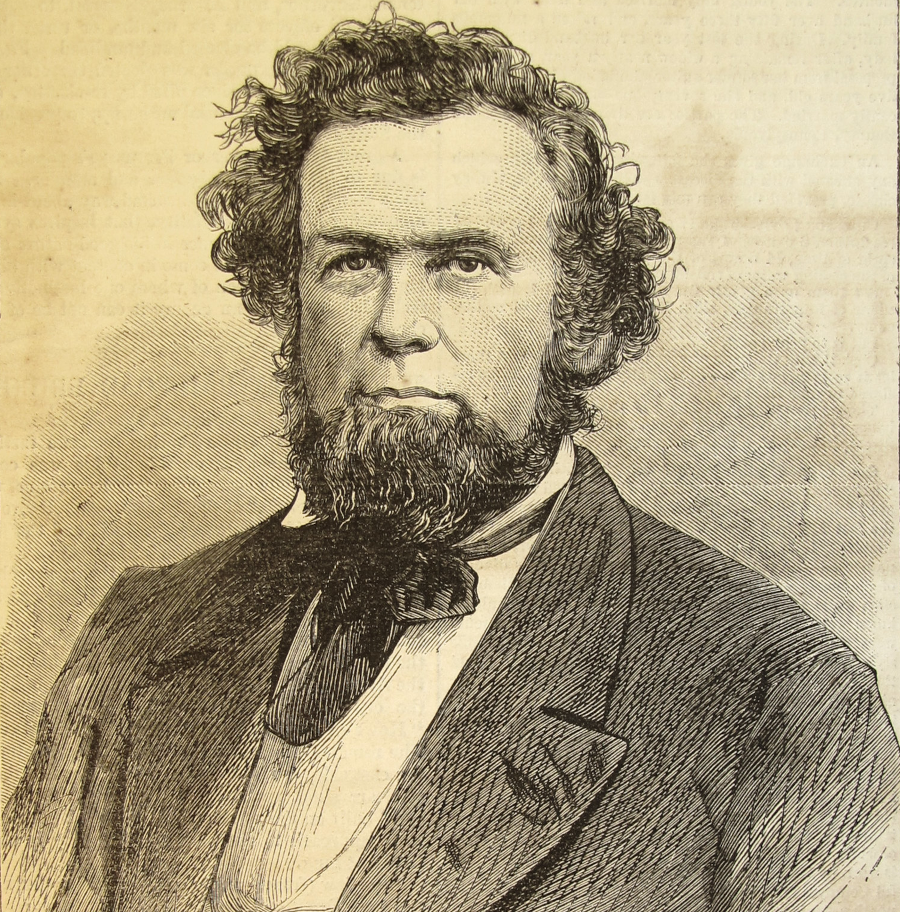
Gov. Francis H. Pierpont was forced to resign early in 1868 by the military commander of Virginia, General John Schofield
Source: Harper's Weekly, Francis H Pierpont March 17th, 1866 (uploaded by Thomas Shahan)
Governor Wells was defeated by Gilbert C. Walker in the race, and Wells resigned on September 21, 1869. General John M. Schofield, still commander of the First Military District, then appointed Walker to serve the rest of the term. Walker was Virginia's last military-appointed governor. On January 1, 1870, he became the first elected governor to serve under the Underwood Constitution, which had been ratified by the voters in 1869 and was key to Virginia being readmitted into the Union.7
No Virginia governor has left office before completing their term since William Smith, Francis Pierpont, and Henry H. Wells in the 1860's.
In 2013, Gov. Robert McDonnell was accused of corruption, trading his influence in exchange for gifts and funding from the owner of a company trying to create a drug from tobacco. Near the very end of his term, McDonnell declined an offer from Federal prosecutors to resign in exchange for a lenient sentence and he finished his four years in office in January, 2014.
That same year the governor and his wife were both convicted in Federal court and later sentenced to jail. The Richmond Style Weekly wryly noted that the only Virginia governor to be convicted of corruption included in his official portrait the statue of George Washington next to the state capitol building:8
The Virginia State Penitentiary with the electric chair for executions was moved to the Greensville Correctional Center and the most violent inmates are now kept at "super-max" prisons built in Wise County. Gov. McDonnell and his wife were sentenced in a Federal court and would have been incarcerated in a Federal prison. Even if the state penitentiary was still located in downtown Richmond, they never would have been sent there. In 2016, the US Supreme Court overturned the conviction in a unanimous decision, ruling that the definition of the crime was too broad in the law.
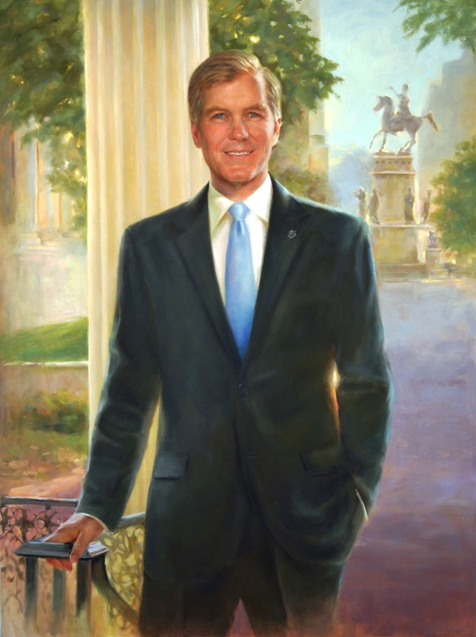
Gov. Robert McDonnell (shown here in his official portrait) is the only Virginia governor to be convicted of corruption
Source: Roanoke Free Press, Governor Bob McDonnell's official gubernatorial portrait
In 2019, Governor Ralph Northam considered resigning. New reports highlighted a picture on his page of his 1984 yearbook from Eastern Virginia Medical School, showing a man dressed in "blackface" and other wearing Ku Klux Klan regalia. Northam acknowledged the old photos were racist and offensive, and admitted that he had once put black shoepolish on his face to compete in a dance contest as Michael Jackson.
Many state and local officials from the Democratic Party called for Governor Northam to resign. Instead, he chose to apologize and dedicated the rest of his term to racial healing. Demands for his ouster were muted after it was revealed that Lieutenant Governor Justin Fairfax, who would replace Northam if he resigned, had been accused of sexual assault by two women.
The demands for both Northam and Fairfax to resign were affected by the revelation that Attorney General Mark Herring had also dressed in blackface during his college years. If the Governor and the Lieutenant Governor both quit, then the Attorney General would have become governor. If he too had resigned, then the Speaker of the House would have assumed the office. Speaker Kirk Cox was a conservative Republican, while Governor Northam, Lieutenant Governor Fairfax, and Attorney General Herring were more-liberal Democrats.9